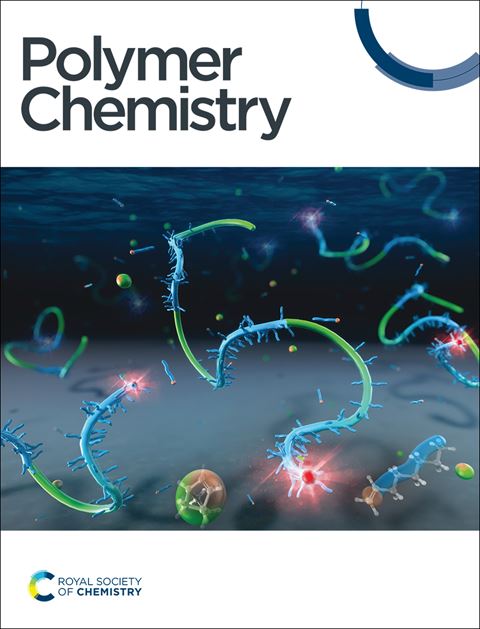五组分CO2和5-羟甲基糠醛衍生物在功能聚呋喃上的聚合
IF 4.1
2区 化学
Q2 POLYMER SCIENCE
引用次数: 0
摘要
目前,将二氧化碳和生物基平台化学品转化为功能性聚合物材料极具挑战性。在本工作中,我们成功地在室温下实现了CO2和5-羟甲基糠醛(HMF)衍生物的Ugi五组分聚合(Ugi- 5cp),制备了功能呋喃,无需使用金属催化剂。此外,Ugi-5CP方法已扩展到各种二胺和二醛,得到了令人满意的分子量(高达14400 g/mol),合理的产率和良好的溶解性的呋喃。Ugi-5CP促进了功能单元的结合,包括呋喃、酰胺和氨基甲酸乙酯。理论计算证实了主链呋喃环上的氧原子与侧基酰胺上的氢原子之间形成分子内氢键。得益于呋喃基团对分子间和分子内氢键的调控,所制得的聚呋喃具有独特的非常规荧光行为、优异的成膜能力、12.0 MPa的高强度和366.9%的断裂伸长率。因此,这项工作不仅介绍了一种利用二氧化碳和生物基平台化学品共聚的新策略,而且为多组分聚合对生物基聚合物性能的调节机制提供了有价值的见解。本文章由计算机程序翻译,如有差异,请以英文原文为准。
Ugi Five-component Polymerizations of CO2 and 5-hydroxymethylfurfural Derivatives toward Functional Polyfurans
Converting CO2 and bio-based platform chemicals into functional polymer materials is currently extremely challenging. In this work, we successfully achieved Ugi five-component polymerization (Ugi-5CP) of CO2 and 5-hydroxymethylfurfural (HMF) derivatives to prepare functional polyfurans at room temperature, without the use of metal catalysts. Furthermore, the Ugi-5CP method had been extended to various diamines and dialdehydes, producing polyfurans with satisfactory molecular weights (up to 14400 g/mol), reasonable yields, and good solubilities. The Ugi-5CP facilitated the incorporation of functional units, including furan, amide, and urethane. Theoretical calculation confirmed the formation of intramolecular hydrogen bonding between the oxygen atom in the furan ring of the main chain and the hydrogen atom in the amide of the side group. Benefiting from the regulation of inter- and intramolecular hydrogen bonding by furan moiety, the resulting polyfurans exhibited unique nonconventional fluorescence behavior, excellent film-forming ability, and high strength of 12.0 MPa with a elongation at break of 366.9%. Therefore, this work not only introduces a novel strategy for copolymerization using CO2 and bio-based platform chemicals but also provides valuable insights into the regulatory mechanism of multi-component polymerization on the properties of bio-based polymers.
求助全文
通过发布文献求助,成功后即可免费获取论文全文。
去求助
来源期刊

Polymer Chemistry
POLYMER SCIENCE-
CiteScore
8.60
自引率
8.70%
发文量
535
审稿时长
1.7 months
期刊介绍:
Polymer Chemistry welcomes submissions in all areas of polymer science that have a strong focus on macromolecular chemistry. Manuscripts may cover a broad range of fields, yet no direct application focus is required.
 求助内容:
求助内容: 应助结果提醒方式:
应助结果提醒方式:


